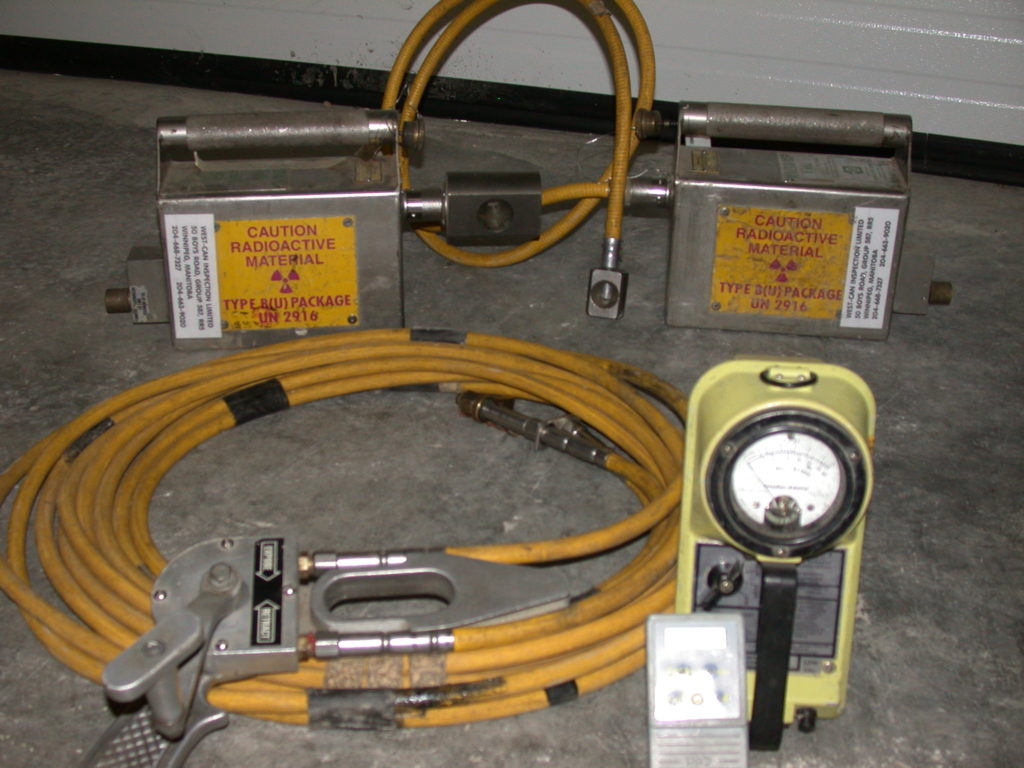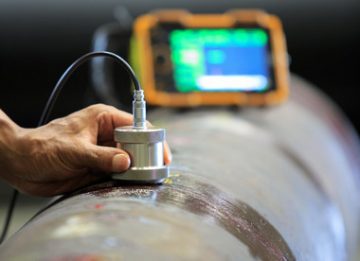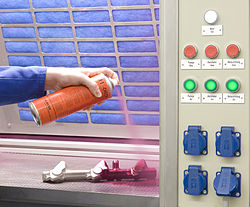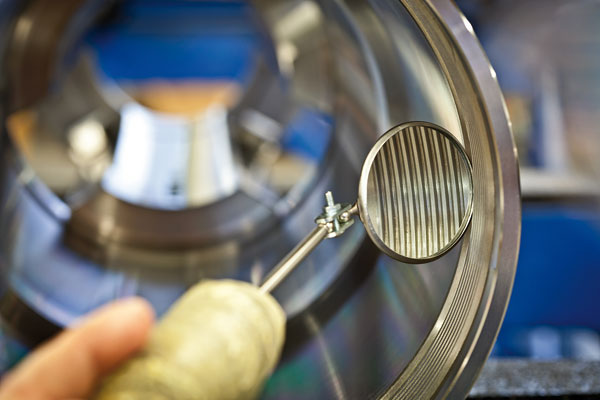our ndt services

Radiographic/X-Ray Testing
RT involves using penetrating gamma- or X-radiation on materials and products to look for defects or examine internal or hidden features. An X-ray generator or radioactive isotope is used as the source of radiation. Radiation is directed through a part and onto film or other detector. The resulting shadowgraph shows the internal features and soundness of the part. Material thickness and density changes are indicated as lighter or darker areas on the film or detector.
The darker areas in the radiograph represent internal voids in the component.
Ultrasonic Testing
In ultrasonic testing, high-frequency sound waves are transmitted into a material to detect imperfections or to locate changes in material properties. The most commonly used ultrasonic testing technique is pulse echo, whereby sound is introduced into a test object and reflections (echoes) from internal imperfections or the part’s geometrical surfaces are returned to a receiver. Below is an example of shear wave weld inspection. Notice the indication extending to the upper limits of the screen. This indication is produced by sound reflected from a defect within the weld.
Ultrasonic use transmission of high-frequency sound waves into a material to detect imperfections or to locate changes in material properties. The most commonly used ultrasonic testing technique is pulse echo, wherein sound is introduced into a test object and reflections (echoes) are returned to a receiver from internal imperfections or from the part’s geometrical surfaces.


Magnetic Particle Testing
This NDT method is accomplished by inducing a magnetic field in a ferromagnetic material and then dusting the surface with iron particles (either dry or suspended in liquid). Surface and near-surface flaws disrupt the flow of the magnetic field within the part and force some of the field to leak out at the surface. Iron particles are attracted and concentrated at sites of the magnetic flux leakages. This produces a visible indication of defect on the surface of the material. The images above demonstrate a component before and after inspection using dry magnetic particles.
The darker areas in the radiograph represent internal voids in the component.
Dye Penetrant Testing
Test objects are coated with visible or fluorescent dye solution. Excess dye is then removed from the surface, and a developer is applied. The developer acts as blotter, drawing trapped penetrant out of imperfections open to the surface. With visible dyes, vivid color contrasts between the penetrant and developer make “bleedout” easy to see. With fluorescent dyes, ultraviolet light is used to make the bleedout fluoresce brightly, thus allowing imperfections to be readily seen.


Visual Testing
The most basic NDT method is visual examination. Visual examiners follow procedures that range from simply looking at a part to see if surface imperfections are visible, to using computer controlled camera systems to automatically recognize and measure features of a component.
Visual inspection involves using an inspector’s eyes to look for defects. The inspector may also use special tools such as magnifying glasses, mirrors, or borescopes to gain access and more closely inspect the subject area. Visual examiners follow procedures that range from simple to very complex.
